A Technicolor film noir with overt homosexual overtones, Desert Fury is a fascinating and wildly entertaining Golden Age anomaly that teems with tension and flirts with camp. How on Earth did this subversive, titillating flick ever get past the censors?
Desert Fury
Theatrical Release Date: August 15, 1947
Blu-ray Release Date: February 26, 2019
Directed by: Lewis Allen
Starring: John Hodiak, Lizabeth Scott, Burt Lancaster, Mary Astor, Wendell Corey
Blu-ray Special Features: Audio commentary, theatrical trailer
“Technicolor film noir” is something of an oxymoron. With all those heavily saturated, eye-popping hues vying for attention, there’s not much room in the frame for the genre’s trademark black-and-white contrast. Film noir may be stylized (who doesn’t love all those shots of swirling cigarette smoke and shafts of light streaming through half-open Venetian blinds?), but it exudes a gritty, realistic feel that complements its violent, criminal yarns. Technicolor, on the other hand, embraces artifice and stokes our senses like a hallucinogen. Swashbucklers and musicals were made for Technicolor. Film noir? Not so much.
Though classics like Out of the Past and Double Indemnity would certainly lose their sting in brilliant color, the three-strip process somehow suits Desert Fury, a deliciously melodramatic study of twisted relationships, murder, and corruption in a two-horse Nevada town. Like a rich dessert, the film luxuriates in its excess, yet all the captivating color just might be camouflage meant to shroud the subversive, taboo themes lurking beneath the picture’s glossy surface.
More on that later. First, let’s set the stage. Small-time hood Eddie Bendix (John Hodiak) and his devoted sidekick Johnny Ryan (Wendell Corey) blow into Chuckawalla, a mining outpost in rural Nevada, just as headstrong hellion Paula Haller (Lizabeth Scott) comes home to roost. The aimless, 19-year-old Paula has spurned college in favor of learning the disreputable business that has made her hard-as-nails mother, Fritzi (Mary Astor), the richest and most powerful figure in town. Fritzi runs the local casino-cum-brothel, and though she’s proud of the trail she’s blazed and relishes her clout, she orders her beloved daughter to stay far away from the shady, immoral establishment.
Chuckawalla’s hunky, straight-arrow cop, Tom Hanson (Burt Lancaster), takes a shine to Paula, but her rebellious streak and thirst for thrills lead her straight into Eddie’s crooked arms. That displeases both her clingy, controlling mom and the jealous Johnny, who doesn’t want a starry-eyed dame distracting Eddie – whose wife died a couple of years earlier under mysterious circumstances – from his business. As tensions heat up, secrets are revealed and conflicts reach their boiling point, leading to a couple of dramatic showdowns.
During the late 1940s, movies began exploring the human psyche’s dark side by using Freudian theories to propel the behavior and delineate the personalities of pivotal characters. Screenwriter Robert Rossen helped pioneer the formula with the previous year’s The Strange Love of Martha Ivers, but he expands its scope in Desert Fury. The film may seem like a typical noir, but look under its hood and you’ll find plenty of provocative elements fueling the narrative engine. First and foremost, bisexual and homosexual undercurrents permeate the script and infuse it with a shocking spiciness that flies in the face of the period’s rigid conservatism. In fact, director Lewis Allen and his esteemed cast so brazenly push the envelope with both imagery and innuendo, the real mystery is how the film’s final cut got past the censors. It’s all subtext, of course, but let’s just say I wasn’t at all surprised when I learned that noir expert and TCM host Eddie Muller labeled Desert Fury “the gayest movie ever produced in Hollywood’s golden era.”
Fritzi’s masculine wardrobe and hairstyle, brusque demeanor, and extreme possessiveness toward Paula denote latent lesbian tendencies. (Barbara Stanwyck would play a very similar character 15 years later in Walk on the Wild Side.) Fritzi always wants Paula close to her, and her suffocating attentions become ever creepier as the movie progresses. Eddie and Johnny’s relationship is equally complex and enigmatic. The two macho men initially appear to be just close business associates, but the subservient Johnny sticks to Eddie like glue, always hovering, protecting, conspiring, and catering to Eddie’s every need. His unwavering devotion goes beyond that of henchman, guy Friday, or bodyguard. The two men rent a house together, and Eddie constantly yaps at Johnny, ordering him to make drinks, fix food, and clean up. It’s pretty clear that Johnny is Eddie’s bitch, and after a scene in which a bare-chested Eddie sits with Johnny drinking coffee and shooting the shit, it’s even clearer that the history the two share goes far beyond liquor and conversation.
When Paula inserts herself into the equation, an awkward triangle develops. Yet hard as she tries to push Johnny out of the picture, he refuses to budge. He’s the constant, she’s the interloper, and like the long-suffering wife who’s got the goods on her spiteful, philandering husband, Johnny promises Paula that Eddie will never leave him. If that isn’t enough evidence of the two men’s homosexual bond, Eddie practically spells it out when he tells Paula how Johnny picked him up – I mean, met him – years ago: “It was in the automat off Times Square about two o’clock in the morning on a Saturday. I was broke. He had a couple of dollars. We got to talking. He ended up paying for my ham and eggs… I went home with him that night… We were together from then on.” Talk about loaded lines! Were the censors asleep? Eddie says something about Johnny’s mother owning a boardinghouse and that’s where he and Johnny (separately) shacked up. I’m sure the censors demanded that addendum, but the implication is all too clear.
Desert Fury may have gay overtones, but it’s anything but effete… save for the Technicolor. Like most noirs, it’s a rough-and-tumble, hard-boiled tale, and the last place we’d ever expect to find a hint of homosexuality, Yet that’s exactly what makes the movie so fascinating. The bulk of the friction is between Fritzi and Paula on one hand and Eddie, Johnny, and Tom on the other. These intense single-sex power struggles drive the story and lend it a unique and compelling dynamic. (In addition to all the explosive dialogue exchanges, there’s a whole lotta face-slapping going on, too.) Peeling back the film’s layers, deciphering its subtext, and marveling at everything it gets away with is a big part of its fun, but Desert Fury wouldn’t be nearly as good without all the superior talent in front of and behind the camera.
The always excellent Astor and underrated Wendell Corey (in his film debut) steal the picture. Their complex, colorful characters consistently grab focus, and both attack their roles with uncommon vigor. Despite all the testosterone on display, Fritzi often acts more manly than her male counterparts. Astor, who several years earlier portrayed the quintessential femme fatale opposite Humphrey Bogart in The Maltese Falcon, seems delighted to return to the world of noir and play the kind of volatile, edgy, conniving vixen that Bette Davis made famous. Corey is more low-key, but just as effective, especially in a climactic speech that sends Eddie off the deep end.
Hodiak receives top billing, but the strapping actor never quite achieved the stardom he deserved and was always regarded as a poor man’s Clark Gable. That actually plays to his advantage here, as it lends his pugnacious mobster just enough masculine insecurity to make his codependent relationship with Johnny believable. Ironically, Scott, with her throaty voice, pouty attitude, and smoldering glares, often came off as a pale imitation of Lauren Bacall throughout most of her career. Though she seems far more mature and worldly than her sheltered 19-year-old character in Desert Fury, Scott looks great in Technicolor (her somewhat androgynous appearance also ties in nicely with the story’s sexually ambiguous themes) and holds her own with her formidable co-stars.
Lancaster is one of them, but surprisingly he gets lost in the shuffle. In only his third film appearance, the 33-year-old actor tries his best to make his mark, but he’s saddled with the movie’s dullest role. His Dudley Do-Right cop is a noble stick-in-the-mud compared to the movie’s other raving maniacs, and despite always looking like a wild stallion ready to explode out of the gate, Lancaster doesn’t get much chance to unleash his pent-up aggression. (His part was reportedly beefed up after he made a splash in his first two films, The Killers and Brute Force, but it still lacked enough heft to merit much notice.)
Aside from its impressive cast, Desert Fury also boasts an enviable roster of technicians who further elevate the film’s reputation. Screenwriter Rossen would nab Oscar nominations for writing and directing the Best Picture winner All the King’s Men a couple of years later and receive the same two nods for 1961’s The Hustler. Cinematographers Charles Lang and Edward Cronjager (who between them would earn 25 Oscar nominations) furnish the lush Technicolor photography, which beautifully showcases the red rock vistas of Sedona, Arizona where much of the movie was shot. Legendary designer Edith Head (who would rack up a whopping 35 nominations and eight wins) supplies the stylish costumes, while composer Miklós Rózsa (17 nominations and three wins) contributes the dramatic music score.
Desert Fury flirts with camp, but stays grounded enough to earn its film noir stripes, despite the Technicolor. It’s also subversive enough to stand out from the crowd and entertaining enough to merit attention today. While contemporary films leave little to the imagination, Desert Fury allows our imagination to run wild, and there’s something exciting and liberating in that. It’s not a great film, but it explodes across the screen and takes us on one hell of a ride. I needed a new guilty pleasure, and this is it.
The Blu-ray
Man, I love Technicolor! While it might not look totally realistic and at times appears downright garish, it adds a breathtaking lushness to Golden Age films that is both unique and mesmerizing. Desert Fury, presented here in its original aspect ratio of 1.37:1, represents everything that’s good about the three-strip process. The excellent 1080p/AVC MPEG-4 transfer from Kino also honors the fine work of the film’s collaborating cinematographers, the aforementioned Charles Lang (an Oscar winner for 1932’s A Farewell to Arms) and Edward Cronjager. Though the opening credits look pretty ragged and the print initially seems a bit faded, the image quickly perks up as the movie gets rolling. Evident but well-resolved grain lends the picture essential texture and preserves its film-like feel. It also neutralizes the vibrant hues, helping them look more natural.
All the colors burst with vitality, but never seem overly pushed. From potent primaries to lovely pastels, each shade is beautifully graded, heightening the impact of Central Arizona’s red rock landscapes and the eye-popping array of chic Edith Head costumes. Close-ups are flat-out gorgeous, highlighting Scott’s androgynous, blonde-haired beauty and Lancaster’s chiseled features. The day-for-night sequences exude a warm glow, shadow detail is quite good, and excellent contrast and clarity lend the image a balanced, pleasing look. Assorted print damage crops up here and there, but you’ll be so dazzled by all the brilliant color, you may not notice.
The DTS-HD Master Audio mono track supplies clear, well-modulated sound. A few pops and a bit of crackle occasionally intrude, but the instances are rare. A wide dynamic range allows Miklós Rózsa’s robust and omnipresent score plenty of room to breathe, and all the snappy dialogue is clear and easy to understand. The only disc extras are an audio commentary and a slew of previews for other Kino Lorber Studio Classics releases, including a re-release trailer for Desert Fury that raises Lancaster’s billing to the top of the heap.

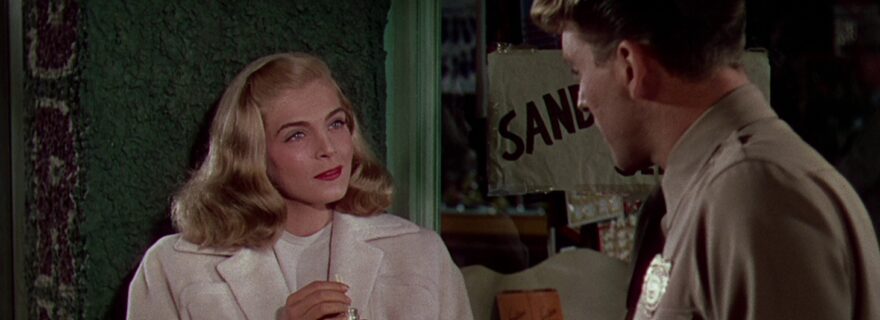
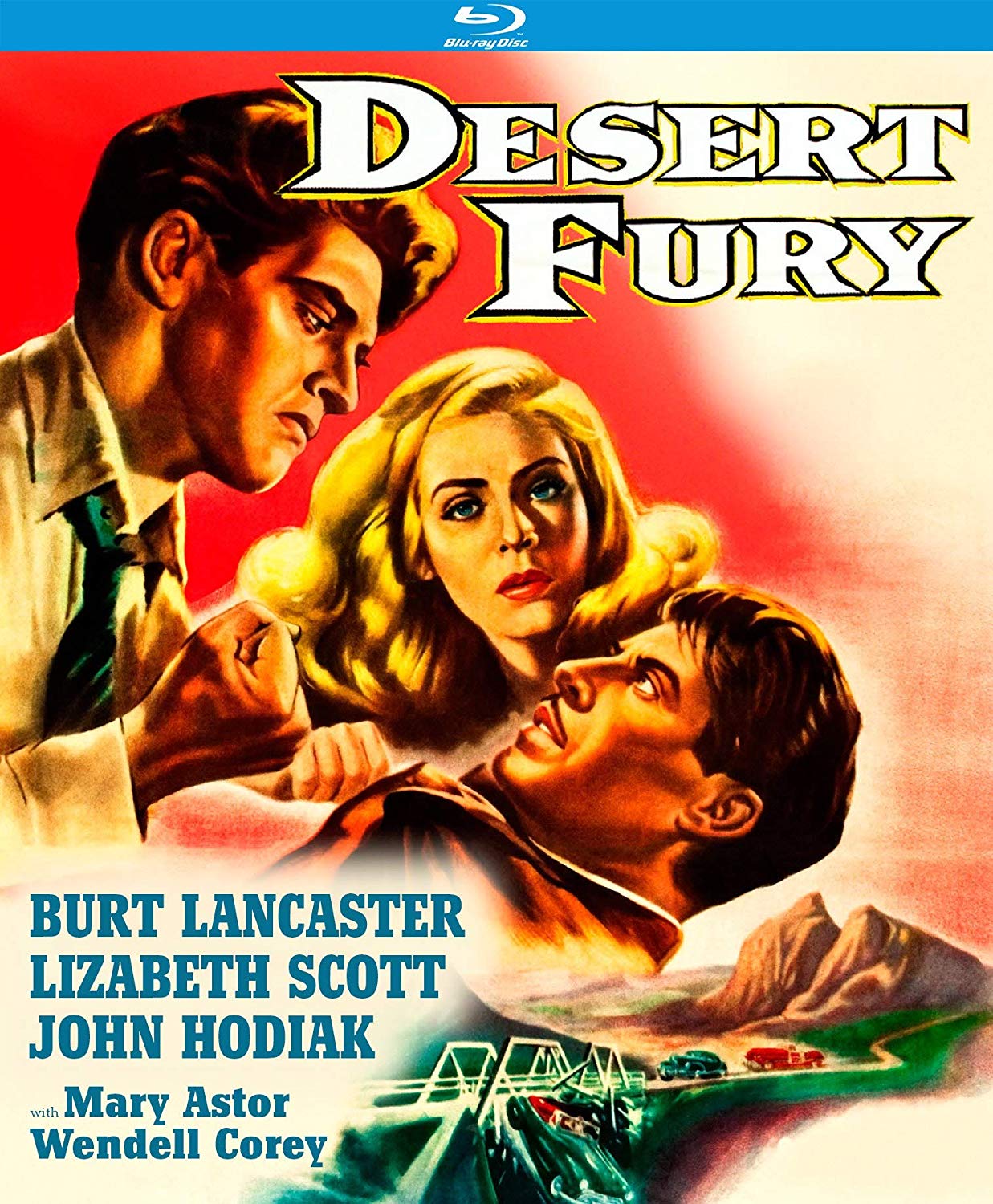
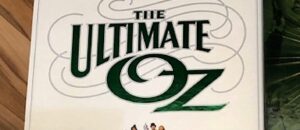
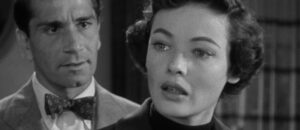
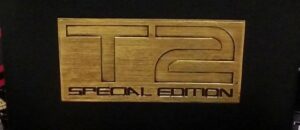
Judas Cradle
There have been interesting arguments made that Hays Code actually created spicier films because the creators had to get inventive to infuse the narratives with subtle subversive themes.
Maybe these themes (as subtext and innuendo) made for more creative filmmaking.
David Krauss
I totally agree. It’s so interesting to see what they are trying to convey and the clever ways they use to get their points across. In one scene in this movie, Hodiak and Corey are sitting at a bar with a couple of redneck guys. After a bit, they decide to go get a table, at which point one of the rednecks says to them, “What’s the matter? Am I not your type?”…with just a slight emphasis on he word “type” to make it seem like the redneck recognizes that Hodiak and Corey are probably gay. Hodiak takes immediate offense at the remark – more so than someone usually would unless they get the innuendo – and he tries to start a fight. The redneck backs down, but then Hodiak pours his steaming cup of coffee over the guy’s neck as a parting shot. If, as a viewer, you are oblivious to the homosexual undertones, you might just think the redneck is being a simple wiseass and Hodiak, who’s jumpy anyway, just overreacts. But if you’ve caught on to the undertones over the course of the movie, that simple remark is pretty loaded and much more effective than some overt bullying slur.
I just love dissecting films like these.
Peter
Thanks David, what a great review. I have never heard of this movie though I am a fan of noir. Color noir does seem strange, and as oxymoronic as that term suggests.
I also agree with the idea that often times working around a limitation, be it the Hayes code, budget limitations, technological limitations, weather on set, etc., can really create opportunities for creative solutions that make the movie better and more interesting. For example, the technical problems with the shark in Jaws led to it being in few scenes, which created more dread and anticipation by the characters talking about it than if you had seen it in every scene.
I have to get a copy of the Desert Fury blu-ray to check it out. Thanks for the recommendation.
David Krauss
Glad you enjoyed the review. I, too, was not familiar with Desert Fury before they sent it to me to review and I am also a big noir fan. I’ll be interested to hear what you think of it. If you get a chance, please post your thoughts after you see it.
marcell
i have been wanting this film on dvd ever since i saw it featured in lavender cinema. i got it for a great price off amazon and it is one of my prized possessions. i am so glad i never settled for a knockoff. even the clips shown in lavender are sub-par compared to the dizzying technicolor of this new release.
i can’t add anything else about the homoerotic subtext except that it was long overdue that someone comment on film about how often a regular guy gives a prettyboy a helping hand and they end up together for a long time.